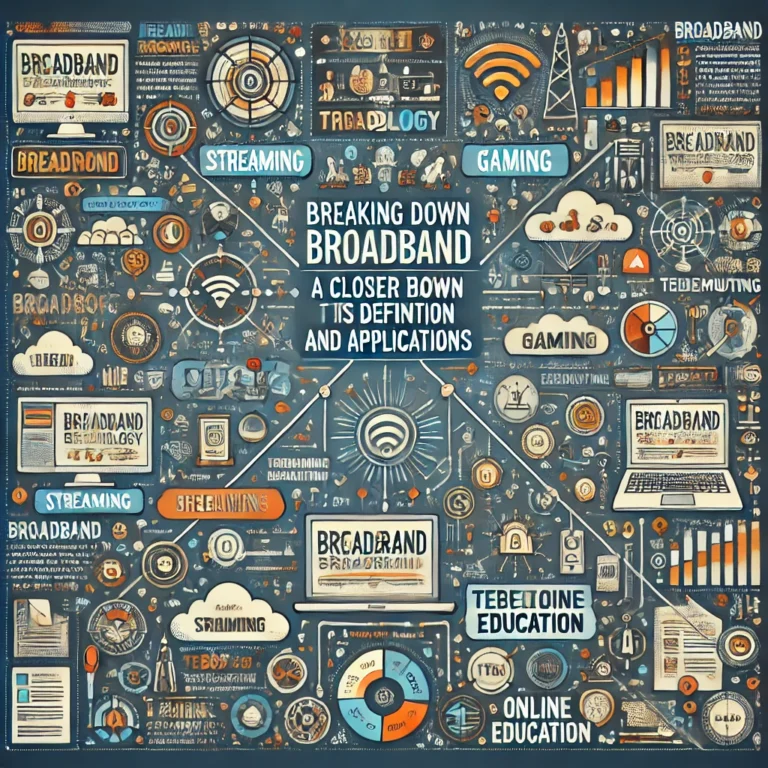Maximize Your Connection: Navigating DSL Speeds in the Broadband Technology Era
In the ever-evolving landscape of broadband technology, Digital Subscriber Line (DSL) remains a cornerstone for millions of users worldwide, offering a reliable and accessible internet connection. As we delve deeper into the capabilities and nuances of DSL, understanding its speeds and performance becomes crucial for optimizing your online experience. This comprehensive guide is designed to unravel the mysteries of DSL speeds, setting realistic expectations and empowering you with the knowledge to make the most of your broadband connection.

Understanding DSL Broadband Technology
DSL technology harnesses the existing copper telephone lines to provide internet connectivity, distinguishing itself with a dedicated line for each user. This setup ensures that your connection remains unaffected by the number of users online, a significant advantage over shared bandwidth solutions. Despite the advent of newer technologies, DSL’s widespread infrastructure and cost-effectiveness keep it in the running as a viable broadband option, especially in areas where options like fiber-optic or cable internet are not feasible.
The Spectrum of DSL Speeds
DSL speeds can vary widely, influenced by factors such as the type of DSL service, the quality of your phone lines, and your distance from the service provider’s facilities. Generally, DSL speeds range from 256 Kbps to over 100 Mbps for the newest iterations like VDSL2. It’s important to note that DSL offers different speeds for downloading and uploading, with download speeds being significantly higher. This asymmetry suits most users well, given the higher demand for downloading content like streaming videos, online gaming, and browsing.
What Factors Affect DSL Performance?
- Distance from ISP’s Central Office: The closer you are, the better your speed and connection stability will be.
- Quality of Your Telephone Lines: Older or poorly maintained lines can degrade your DSL speed.
- Type of DSL Connection: ADSL, SDSL, VDSL, and VDSL2 offer different speed capabilities, with VDSL2 being the fastest available DSL technology.
- Network Congestion: Although less affected than cable, DSL can still experience slowdowns during peak usage times.
Real-World DSL Speed Expectations
While providers may advertise optimal speeds, real-world usage often tells a different story. Environmental factors, internal wiring, and even the age of your DSL modem can impact performance. On average, users can expect speeds ranging from 5 to 35 Mbps for ADSL2+, with VDSL2 offerings potentially reaching up to 100 Mbps in ideal conditions. It’s crucial to manage expectations and understand that advertised speeds represent the best-case scenario, not the guaranteed throughput.
Enhancing Your DSL Experience
To maximize your DSL connection, consider the following tips:
- Upgrade Your Modem: Ensure your modem supports the latest DSL standards.
- Optimize Internal Wiring: Poor internal wiring can significantly reduce speed. Consider hiring a professional to inspect and upgrade your wiring if necessary.
- Use a Wired Connection: Whenever possible, connect directly to your modem via Ethernet to avoid the speed drop-off associated with Wi-Fi.
- Filter Interference: Ensure that all devices connected to your phone line have DSL filters, excluding the modem itself, to prevent signal interference.
The Future of DSL in the Broadband Landscape
As broadband technology continues to advance, DSL faces stiff competition from fiber-optic and cable solutions offering superior speeds and reliability. However, DSL’s widespread availability and ongoing improvements in technology, such as the development of G.fast (a protocol designed to achieve fiber-like speeds over copper lines), ensure its relevance in the broadband ecosystem, particularly in areas where other high-speed options are not yet available.
In conclusion, DSL broadband technology offers a blend of accessibility, reliability, and improving performance that keeps it relevant in today’s high-speed internet landscape. By understanding the factors that influence DSL speeds and taking steps to optimize your setup, you can enjoy a robust and efficient online experience, even as we look forward to the future advancements that may redefine broadband technology.




